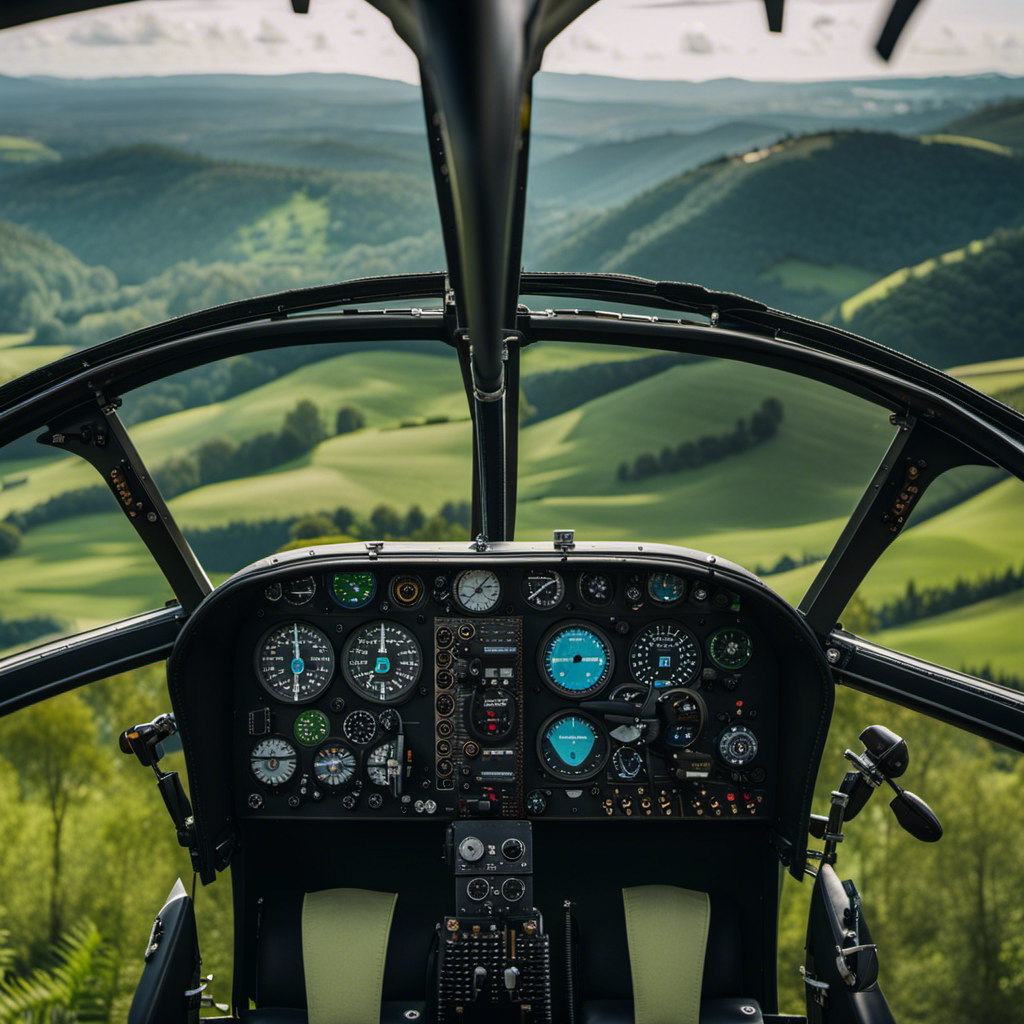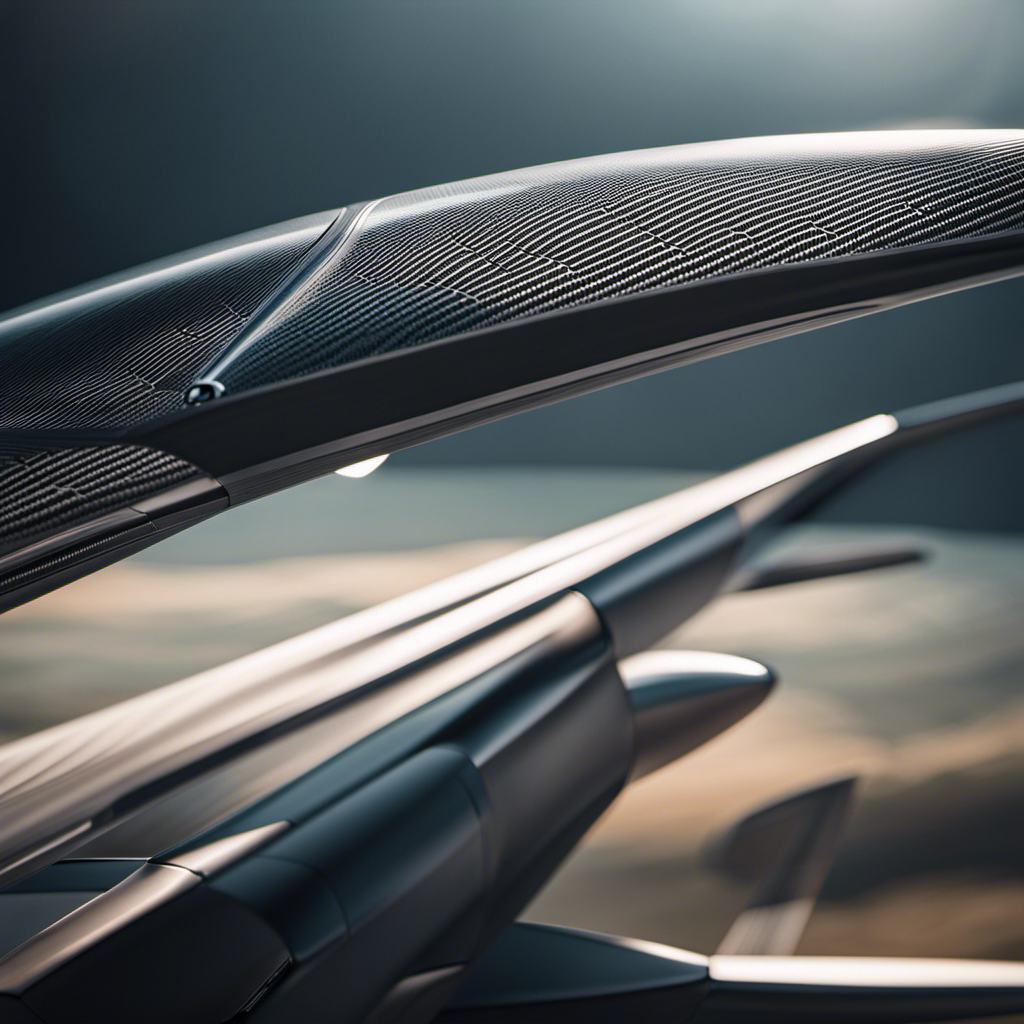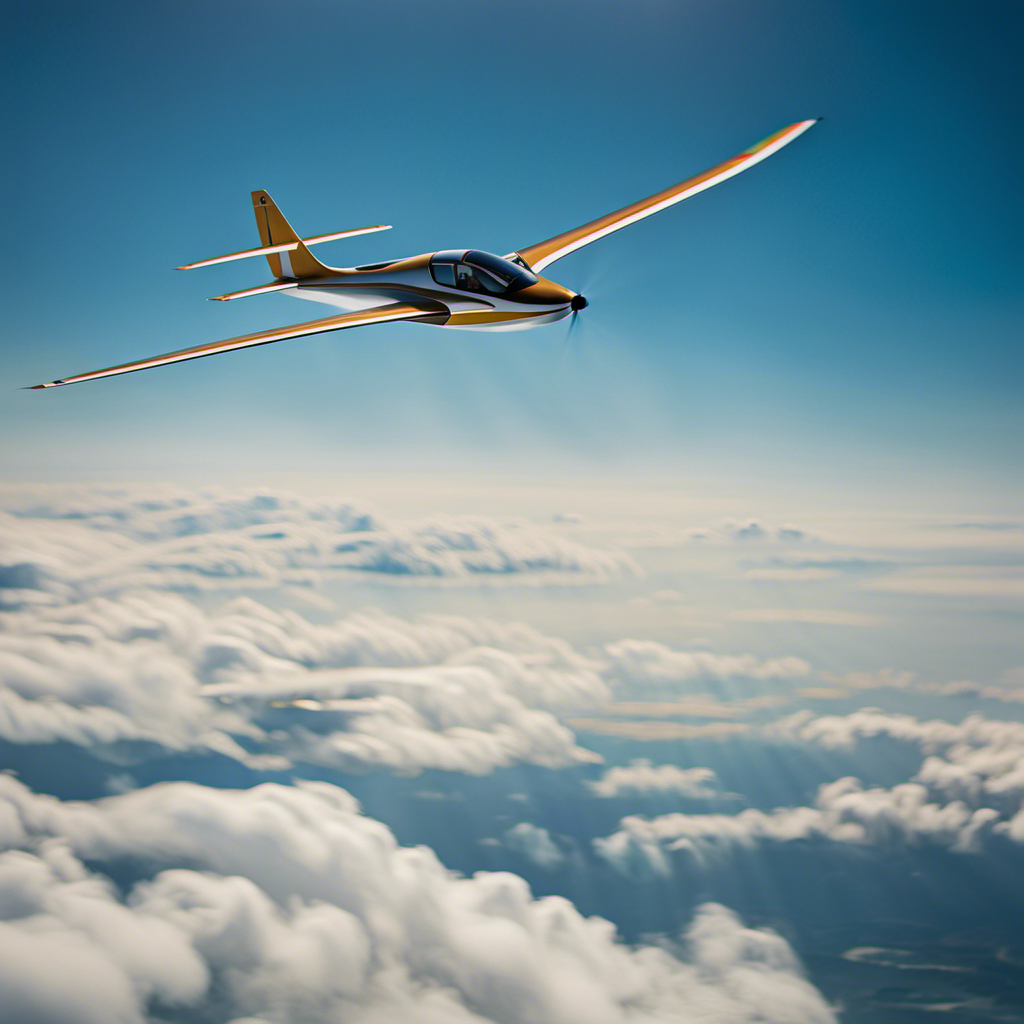As an enthusiast of gliders, I have always been fascinated by the impressive longevity of these charming animals. Have you ever wondered about the lifespan of gliders?
In this article, we’ll delve into the factors that influence their longevity, including genetics, diet, exercise, and veterinary care. We’ll also explore common health issues and provide tips on how to extend the lifespan of your glider.
So, let’s embark on this journey to uncover the secrets of glider longevity together!
Key Takeaways
- Regular check-ups and preventive care increase the lifespan of gliders.
- Socialization with other gliders and providing mental stimulation through playtime and enrichment activities is essential for their overall health.
- Dental diseases, obesity, and parasitic infections are common health issues in gliders, but can be prevented through regular veterinary check-ups, a balanced diet, and maintaining a clean environment.
- Providing an enriching environment that mimics the gliders’ natural habitat and offering toys and puzzles is important for their mental well-being and prevents boredom.
Understanding the Lifespan of Gliders
You might be wondering, how long do gliders actually live?
Understanding glider life expectancy requires examining various factors that can affect their lifespan.
On average, gliders have a lifespan of about 6 to 10 years in the wild. However, with proper care and a suitable environment, they can live up to 12-15 years in captivity.
One key factor that affects glider longevity is their diet. A balanced diet containing fruits, vegetables, and protein-rich foods is essential for their overall health and wellbeing.
Additionally, providing them with ample space for exercise and mental stimulation can also contribute to their lifespan.
Other factors such as genetics, hygiene, and veterinary care also play a role in determining the lifespan of gliders.
Understanding these factors can help ensure that gliders live a long and healthy life.
Factors That Affect Glider Longevity
Take into account the various factors that can impact how long a glider lives. Glider habitat plays a significant role in determining their lifespan. These small marsupials thrive in temperate forests and woodlands, where they can find ample food sources and suitable nesting sites. However, the presence of natural predators, such as owls and snakes, can greatly affect their survival rate. Gliders have evolved various adaptations, including their ability to glide through the air, to avoid predation. To better understand the factors influencing glider longevity, let’s consider the following table:
| Factor | Impact on Glider Longevity | Examples |
|---|---|---|
| Habitat | Crucial for survival | Forests, woodlands |
| Natural Predators | Can decrease lifespan | Owls, snakes |
| Diet | Affects overall health | Nectar, pollen, insects, sap, tree gum |
| Climate | Influences availability of resources | Temperature, rainfall, seasonality |
| Human Activities | Can disrupt their habitat | Deforestation, urbanization, pollution |
Understanding these factors will provide a foundation for exploring the role of genetics and hereditary factors in glider lifespan.
Genetics and Hereditary Factors
When it comes to genetics and hereditary factors, understanding how they influence glider longevity is crucial. Genetic disorders can have a significant impact on a sugar glider’s lifespan.
Breeding practices play a vital role in minimizing the occurrence of genetic disorders. Responsible breeders carefully select breeding pairs to ensure the health and longevity of their offspring. By avoiding individuals with known genetic issues, breeders can help reduce the risk of passing on inherited conditions that may shorten a glider’s lifespan.
Additionally, proper breeding practices can promote genetic diversity, which is essential for the overall health of the glider population. Understanding the genetics behind glider longevity allows breeders to make informed decisions and contribute to the long-term health and wellbeing of these adorable creatures.
Moving on to the next section, let’s explore the important role that diet and nutrition play in glider lifespan.
Diet and Nutrition
The quality of a glider’s diet directly impacts its overall health and longevity. Gliders require a balanced diet that meets their specific nutritional requirements. A well-rounded diet for gliders consists of a variety of foods, including fruits, vegetables, protein sources, and a small amount of fats.
Fruits such as apples, grapes, and berries provide essential vitamins and minerals, while vegetables like carrots and leafy greens offer fiber and antioxidants. Protein sources like insects and small amounts of lean meat help to support muscle development and repair. Fats, found in nuts and seeds, provide energy and assist with nutrient absorption.
A balanced diet ensures that gliders receive all the necessary nutrients to maintain optimal health and live a long, fulfilling life.
Transitioning into the next section, exercise and physical activity play a crucial role in a glider’s overall well-being.
Exercise and Physical Activity
Regular exercise is essential for maintaining a glider’s overall health and well-being. Gliders are energetic creatures that require physical activity to stay fit. Here are three important reasons why exercise is crucial for gliders:
-
Physical fitness: Exercise helps gliders build strong muscles, improve their agility, and maintain a healthy weight. It also promotes cardiovascular health and prevents obesity-related issues.
-
Mental stimulation: Engaging in physical activities like climbing, jumping, and playing with toys provides mental stimulation for gliders. This helps prevent boredom and promotes overall well-being.
-
Bonding and social interaction: Exercise can be a fun way for gliders and their owners to interact and bond. It provides an opportunity for socialization and strengthens the relationship between gliders and their caregivers.
Engaging in regular exercise is a key component of glider care. By ensuring their physical fitness, mental stimulation, and social interaction, we can help them lead happy and healthy lives.
Moving on to environmental factors…
Environmental Factors
You should consider the environmental factors that can impact your glider’s health and well-being.
Sugar gliders are native to the forests of Australia, where they have evolved to adapt to a specific climate. Climate adaptation is crucial for their survival, as they are sensitive to temperature changes.
In the wild, they rely on the shelter and resources provided by their natural habitat. However, habitat destruction due to deforestation and urbanization poses a significant threat to their well-being.
It is essential to create a suitable environment for your glider, mimicking their natural habitat as closely as possible. This includes providing ample space for climbing and gliding, offering a diverse diet, and ensuring proper ventilation and temperature control.
Taking these environmental factors into consideration is a vital step in providing the best care for your glider’s health and well-being, which will be further discussed in the subsequent section on veterinary care and health maintenance.
Veterinary Care and Health Maintenance
It’s important to schedule regular check-ups with a veterinarian to ensure your glider’s health and well-being. Here are three reasons why veterinary check-ups are crucial for glider healthcare:
-
Early detection of health issues: Regular check-ups allow the veterinarian to identify any potential health problems early on. This can prevent the progression of diseases and increase the chances of successful treatment.
-
Preventive care: Veterinarians can provide vaccinations, parasite control, and dental care to keep your glider healthy. They can also offer advice on proper nutrition, exercise, and environmental enrichment.
-
Monitoring growth and development: Regular check-ups allow the veterinarian to monitor your glider’s growth and development. They can assess their weight, dental health, and overall physical condition to ensure they are thriving.
By scheduling regular veterinary check-ups, you can ensure that your glider receives the necessary care and attention to maintain their health and well-being.
This is just one aspect of glider care, as social interaction and mental stimulation are also essential for their overall happiness.
Social Interaction and Mental Stimulation
Make sure to provide your glider with plenty of opportunities for social interaction and mental stimulation to keep them happy and engaged.
Sugar gliders are highly social animals and thrive on socialization with their own kind. It is important to house them in pairs or small groups to prevent loneliness.
Social interaction can be facilitated through playtime outside the enclosure, where they can interact with their human caretakers.
Additionally, gliders benefit from enrichment activities such as puzzle toys, climbing structures, and foraging opportunities. These activities provide mental stimulation and help prevent boredom.
Engaging their natural behaviors, such as gliding and exploring, can enhance their overall well-being.
By ensuring your glider receives proper socialization and enrichment activities, you can promote their mental and emotional health.
Now, let’s move on to common health issues and how to prevent them.
Common Health Issues and How to Prevent Them
Now that we’ve discussed the importance of social interaction and mental stimulation for sugar gliders, let’s delve into some common health issues they may face and how we can prevent them.
Common Health Issues and How to Prevent Them
As with any living creature, sugar gliders can experience health issues. Some common problems include dental diseases, obesity, and parasitic infections. Dental diseases can arise from a diet lacking in proper nutrients, causing tooth decay and gum infections. Obesity can result from overfeeding or providing an imbalanced diet. Parasitic infections, such as mites or internal parasites, can cause discomfort and potentially lead to more severe health problems.
To prevent these issues, it is crucial to provide a balanced diet consisting of fruits, vegetables, proteins, and calcium-rich foods. Regular veterinary check-ups are also essential for early detection and treatment. Additionally, maintaining a clean and hygienic environment helps prevent parasitic infestations.
Now that we understand the common health issues that can affect sugar gliders, let’s explore some tips for extending their lifespan.
Tips for Extending the Lifespan of Your Glider
To ensure your sugar glider has a long and healthy life, you should provide a balanced diet, regular veterinary check-ups, and a clean living environment. Here are some tips for extending the lifespan of your glider:
-
Create an enriching environment: Sugar gliders are highly social animals that thrive in environments that mimic their natural habitats. Provide plenty of climbing and hiding spots, as well as toys and puzzles to stimulate their minds.
-
Engage in bonding activities: Spending quality time with your glider is crucial for building a strong bond and ensuring their mental well-being. Take them out for supervised play sessions, offer treats during training exercises, and provide opportunities for interactive play.
-
Maintain a consistent schedule: Gliders are creatures of habit, so establish a regular feeding, sleeping, and playtime routine to reduce stress and promote a sense of security.
-
Monitor their health: Regular veterinary check-ups are essential for detecting any potential health issues early on. Make sure to schedule routine examinations and vaccinations to keep your glider in optimal health.
Frequently Asked Questions
Can gliders live longer if they are kept alone?
No, gliders do not live longer if they are kept alone. Social interaction provides numerous benefits for gliders, including mental stimulation, exercise, and grooming. Environmental enrichment also plays a significant role in extending their lifespan.
What is the average lifespan of a glider in captivity compared to their lifespan in the wild?
In captivity, sugar gliders have an average lifespan of 10-12 years, whereas in the wild, they can live up to 15 years. Factors contributing to shorter lifespans in captivity include diet, stress, and lack of exercise.
Are there any specific diseases or health conditions that commonly affect gliders?
With gliders, common health issues include dental problems, obesity, and nutritional deficiencies. Captivity can impact their health by increasing stress levels and limiting their natural behaviors.
Is it possible to extend the lifespan of a glider through specific dietary supplements?
Dietary supplements can potentially contribute to the overall health and well-being of gliders, leading to a longer lifespan. These supplements may provide specific health benefits, but it’s important to consult a veterinarian for appropriate recommendations.
How does the age of a glider’s parents affect their own lifespan?
The age of a glider’s parents can have an impact on their own lifespan. This is due to the effect of genetics, as well as the potential influence of parental care on longevity.
Conclusion
In conclusion, understanding the lifespan of gliders is crucial for their well-being. By considering factors like genetics, diet, exercise, veterinary care, and social interaction, we can extend their lives and ensure their happiness.
Like the mythical Phoenix rising from the ashes, we have the power to nurture these remarkable creatures and watch them thrive. So let us take up the mantle of responsibility and create a world where gliders can spread their wings and soar, for years to come.
With a heart that soars as high as the skies, Aria, affectionately known as “Skylark,” is the driving force behind Soaring Skyways. Her journey into the gliding world began as a young dreamer gazing up at the soaring birds, yearning to experience the weightlessness and freedom they embodied. With years of experience both in the cockpit and behind the scenes, Aria’s commitment to the gliding community is unwavering.










